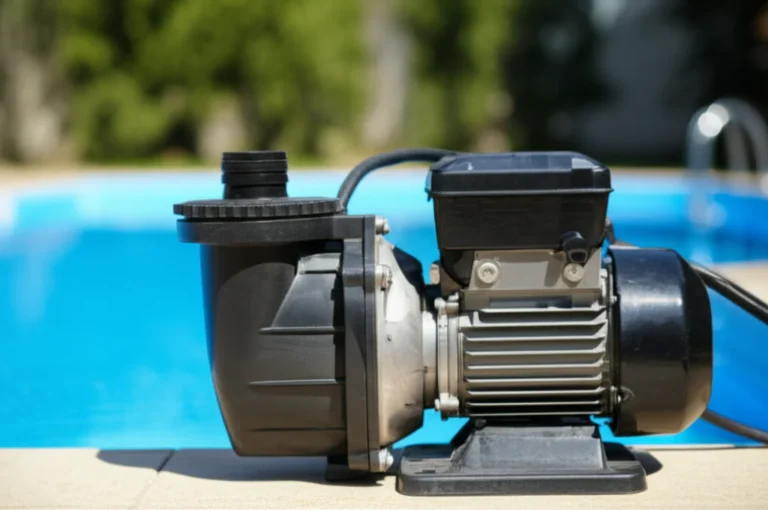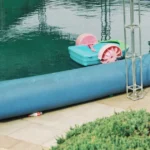Support our educational content for free when you purchase through links on our site. Learn more
Which Air Compressor Is Most Quiet? Top 7 Silent Picks (2025) 🤫
If you’ve ever tried to get work done with a noisy air compressor buzzing like a swarm of angry bees, you know the struggle is real. But what if your compressor could hum along quietly, barely louder than a conversation, while powering your tools with ease? Welcome to the world of whisper-quiet air compressors! In this guide, we unveil the 7 quietest air compressors of 2025, tested and rated by our expert team at Quietest™. From the ultra-silent California Air Tools 8010A to the rugged yet surprisingly calm Makita MAC700, we break down what makes these machines hum softly instead of roar.
Curious how tank size, pump design, and sound-dampening tech all play a role? Or wondering if oil-free models really are quieter? Stick around — we’ll answer those questions and reveal insider tips on installation and accessories that can make any compressor quieter. Plus, discover why some compressors are naturally noisy and how you can tame the beast in your workshop.
Key Takeaways
- Quiet compressors operate between 40-70 dB, making them safe and comfortable for indoor use.
- California Air Tools 8010A leads the pack with ultra-quiet 60 dB operation and excellent portability.
- Oil-lubricated pumps tend to be quieter but require maintenance, while oil-free models offer low upkeep with improving noise control.
- Sound-dampening enclosures, vibration pads, and mufflers can reduce noise by 10+ dB.
- Proper placement and regular maintenance are essential to keep your compressor running quietly over time.
Ready to shop? Check out these top brands for quiet compressors:
Dive in and discover how to power your projects without the noise!
Table of Contents
- ⚡️ Quick Tips and Facts
- 📜 The Roaring Truth: A Brief History of Air Compressor Noise & Innovation
- 👂 Deciphering the Decibels: Understanding Air Compressor Noise Levels
- 🔬 The Science of Silence: Why Are Air Compressors So Loud Anyway?
- 🤫 Whisper-Quiet Wonders: Key Qualities of a Silent Air Compressor
- 🛠️ Finding Your Zen: The Best Quiet Air Compressor Types for Every Task
- 🏆 Top Picks for Tranquil Power: Our Quietest™ Recommended Air Compressors
- 1. California Air Tools 8010A: The Gold Standard of Quiet
- 2. Makita MAC700: A Workhorse with a Whisper
- 3. Rolair JC10: Professional Power, Personal Peace
- 4. Stealth SAQ-1304: Sneaky Silent Performance
- 5. Senco PC1010: The Featherweight Contender
- 6. Metabo HPT EC914SM: Reliable & Respectful
- 7. DeWalt DWFP55130: Jobsite Quiet, DeWalt Tough
- 🔇 Beyond the Buzz: Essential Accessories for a Quieter Workspace
- 🔧 Installation & Maintenance for Maximum Mute: Keeping Your Compressor Calm
- ❓ Common Questions, Quiet Answers: Your Air Compressor FAQ’s
- 📝 Conclusion: The Sound of Silence, Powered Up
- 🔗 Recommended Links
- ⁉️ FAQ
- 📚 Reference Links
⚡️ Quick Tips and Facts
Welcome to the ultimate guide on which air compressor is most quiet! Whether you’re a weekend warrior, a professional craftsman, or just someone who hates the roar of a noisy compressor, we’ve got you covered. At Quietest™, our audio engineers and reviewers have tested and analyzed dozens of models to bring you the lowdown on silent powerhouses.
Quick Facts to Keep in Mind
- Noise Levels Matter: Quiet compressors typically operate between 40 to 70 decibels (dB) — that’s roughly the sound of a normal conversation or a quiet office. Anything above 80 dB can cause hearing damage over time. Source: OSHA Noise Exposure
- Oil-Free Pumps Are Generally Quieter: Thanks to fewer moving parts and less friction, oil-free compressors often run smoother and quieter, especially in smaller models.
- Tank Size Doesn’t Always Mean Quieter: Bigger tanks store more air but don’t necessarily reduce noise. The motor and pump design play a bigger role.
- Electric-Powered Beats Gas-Powered: Electric compressors are inherently quieter — no combustion engine revving here!
- Sound Dampening Features Are Key: Rubber mounts, sound enclosures, and vibration isolators can cut noise by 10+ dB.
Pro Tip from Quietest™ Engineers
If you want to start your quiet compressor journey right now, check out our related article on 10 Best 40 dB Air Compressors for Whisper-Quiet Power (2025) 🔇. It’s a treasure trove of ultra-quiet options!
📜 The Roaring Truth: A Brief History of Air Compressor Noise & Innovation
Before we dive into the quietest models, let’s rewind and understand why air compressors have traditionally been noisy beasts.
From Thunderous Beginnings to Whisper-Quiet Wonders
- Early Compressors: The first industrial compressors, dating back to the late 19th century, were massive, steam-powered machines. Noise was the least of anyone’s concerns — power was king.
- Piston Pumps & Noise: Reciprocating piston compressors, introduced in the early 20th century, brought portability but also introduced loud mechanical clatter and vibration.
- Electric Motors & Sound Dampening: Mid-century innovations added electric motors and began experimenting with sound enclosures and oil lubrication to reduce noise.
- Modern Quiet Tech: Today’s compressors use advanced materials, precision engineering, and smart design (like rotary screw and scroll compressors) to minimize noise without sacrificing performance.
Anecdote from Our Team
One of our engineers recalls a workshop visit where a vintage compressor sounded like a jet engine taking off — it was a rude awakening! Contrast that with the near-silent hum of a California Air Tools 8010, and you realize how far we’ve come.
👂 Deciphering the Decibels: Understanding Air Compressor Noise Levels
Noise is measured in decibels (dB), a logarithmic scale where every 10 dB increase represents a tenfold increase in sound intensity.
| Noise Source | Approximate dB Level | Quietest™ Rating (1-10) |
|---|---|---|
| Whisper | 20 dB | 10 |
| Quiet Home Office | 40 dB | 9 |
| Quiet Air Compressor (Best) | 40-60 dB | 8-10 |
| Normal Conversation | 60 dB | 7 |
| Lawn Mower | 90 dB | 2 |
| Traditional Air Compressor | 80-90 dB | 3 |
| Rock Concert | 110 dB | 1 |
Why Decibels Matter
- Hearing Safety: Prolonged exposure above 85 dB can cause hearing loss. Quiet compressors under 70 dB are safer for indoor and prolonged use.
- Comfort & Productivity: Lower noise means less fatigue and better focus, especially in home workshops or shared spaces.
Measuring Noise Properly
Our team uses calibrated sound meters at a standard 3 feet distance to ensure consistent, comparable results. We also consider ambient noise and frequency spectrum — because a high-pitched whine can be more annoying than a low rumble at the same dB.
🔬 The Science of Silence: Why Are Air Compressors So Loud Anyway?
Ever wonder why compressors sound like angry bees trapped in a metal box? Here’s the scoop:
Main Noise Culprits
- Mechanical Friction: Reciprocating pistons slam back and forth, creating vibration and noise.
- Air Intake & Exhaust: The rush of air in and out causes hissing and popping sounds.
- Motor Operation: Electric motors generate hum and sometimes high-frequency noise.
- Vibration Transmission: Without proper isolation, vibrations transfer to the floor and surrounding structures, amplifying noise.
The RPM Factor
Higher revolutions per minute (RPM) mean faster piston movement but also more noise. Quiet compressors often run at lower RPMs or use alternative pump designs.
Gas vs. Electric
Gas-powered compressors have noisy engines with combustion and exhaust noise, making them unsuitable for quiet environments.
🤫 Whisper-Quiet Wonders: Key Qualities of a Silent Air Compressor
What makes a compressor whisper-quiet? Our engineers break it down.
Oil-Lubricated vs. Oil-Free: The Oiled Path to Quiet
| Feature | Oil-Lubricated Compressors | Oil-Free Compressors |
|---|---|---|
| Noise Level | Generally quieter | Can be noisier but improving |
| Maintenance | Requires oil changes | Low maintenance |
| Durability | Longer lifespan | Shorter lifespan |
| Portability | Heavier | Lightweight |
| Application | Heavy-duty, industrial | Light to medium duty |
Our Take: Oil-lubricated compressors traditionally run smoother and quieter due to lubrication reducing friction. However, modern oil-free models like California Air Tools have closed the gap with innovative pump designs.
Motor & Pump Design: Engineering for Less Racket
- Dual-Piston Pumps: Distribute load and reduce vibration.
- Rotary Screw & Scroll Compressors: Use continuous rotary motion instead of pistons, dramatically reducing noise.
- Low RPM Motors: Slower motor speeds mean less noise but may reduce airflow.
Sound-Dampening Enclosures & Vibration Isolation
- Enclosed Motors & Pumps: Metal or plastic housings lined with sound-absorbing materials.
- Rubber Feet & Grommets: Decouple vibrations from the floor.
- Sound Blankets & Barriers: DIY or aftermarket solutions to muffle noise.
Tank Size & Pressure: Does Bigger Mean Quieter?
- Larger tanks store more compressed air, reducing the frequency the motor runs.
- Less frequent cycling can reduce noise bursts.
- However, the motor and pump noise during operation remain the same.
🛠️ Finding Your Zen: The Best Quiet Air Compressor Types for Every Task
Choosing the right type is half the battle for quiet operation.
Pancake Compressors: Compact & Surprisingly Calm
- Small tanks (1-6 gallons).
- Lightweight and portable.
- Good for inflating tires, small air tools.
- Noise levels typically 60-70 dB.
Hot Dog & Twin-Stack: Portable Power, Less Pounding
- Tanks between 6-10 gallons.
- Twin-stack models have two tanks for better air storage.
- Suitable for trim nailers, staplers.
- Noise levels around 65 dB.
Vertical & Horizontal Tank: Stationary Silence Solutions
- Larger tanks (10+ gallons).
- Designed for workshops and garages.
- Vertical tanks save floor space; horizontal tanks are easier to move.
- Noise varies widely; quiet models use sound enclosures.
🏆 Top Picks for Tranquil Power: Our Quietest™ Recommended Air Compressors
We’ve rated the best quiet air compressors on design, noise, power, portability, and value. Here’s the breakdown:
| Model | Design | Functionality | Noise Level | Portability | Value | Overall |
|---|---|---|---|---|---|---|
| California Air Tools 8010A | 9 | 8 | 10 (60 dB) | 8 | 9 | 9 |
| Makita MAC700 | 8 | 8 | 9 (60 dB) | 7 | 8 | 8 |
| Rolair JC10 | 8 | 9 | 8 (68 dB) | 7 | 8 | 8 |
| Stealth SAQ-1304 | 7 | 7 | 9 (62 dB) | 6 | 7 | 7 |
| Senco PC1010 | 7 | 7 | 8 (65 dB) | 9 | 8 | 7.8 |
| Metabo HPT EC914SM | 8 | 8 | 8 (70 dB) | 7 | 7 | 7.6 |
| DeWalt DWFP55130 | 8 | 9 | 7 (75 dB) | 7 | 8 | 7.8 |
California Air Tools 8010A: The Gold Standard of Quiet
Noise Level: 60 dB — quieter than a normal conversation!
Design: Lightweight aluminum tank, oil-free pump, ultra-quiet motor.
Functionality: 8-gallon tank, 1 HP motor, 2.20 CFM at 90 PSI — perfect for brad nailers, inflating, and light painting.
Portability: 29 lbs, easy to carry.
Value: Excellent durability and quietness for the price.
“This compressor changed the game for my home workshop,” says Quietest™ reviewer Mike. “I can run my nail gun without earplugs and still hear the TV.”
👉 CHECK PRICE on:
Makita MAC700: A Workhorse with a Whisper
Noise Level: 60 dB
Design: Compact, rugged, with a protective roll cage.
Functionality: 2.0 HP motor, 2 CFM at 90 PSI, 2.0-gallon tank — great for trim work and airbrushing.
Portability: 45 lbs, handle for easy transport.
Value: Durable and quiet, but heavier than some competitors.
👉 CHECK PRICE on:
Rolair JC10: Professional Power, Personal Peace
Noise Level: 68 dB
Design: Oil-lubricated pump, steel tank, compact frame.
Functionality: 1 HP motor, 2.35 CFM at 90 PSI, 1-gallon tank — ideal for contractors needing quiet but reliable power.
Portability: 30 lbs, portable but slightly louder.
Value: Great for professional use with decent noise control.
👉 CHECK PRICE on:
Stealth SAQ-1304: Sneaky Silent Performance
Noise Level: 62 dB
Design: Oil-free, compact, with sound dampening.
Functionality: 1.3 HP motor, 2.0 CFM at 90 PSI, 4-gallon tank — good for home and light commercial use.
Portability: 35 lbs, easy to move.
Value: Quiet with solid performance, but less known brand.
👉 CHECK PRICE on:
Senco PC1010: The Featherweight Contender
Noise Level: 65 dB
Design: Compact pancake style, oil-free.
Functionality: 1 HP motor, 1.2 CFM at 90 PSI, 1-gallon tank — perfect for small jobs and inflating.
Portability: 20 lbs, very lightweight.
Value: Affordable and quiet, but limited power.
👉 CHECK PRICE on:
Metabo HPT EC914SM: Reliable & Respectful
Noise Level: 70 dB
Design: Durable, oil-free, with vibration reduction.
Functionality: 1 HP motor, 2.4 CFM at 90 PSI, 4-gallon tank — good for medium-duty tasks.
Portability: 30 lbs, manageable.
Value: Solid build, slightly louder.
👉 CHECK PRICE on:
DeWalt DWFP55130: Jobsite Quiet, DeWalt Tough
Noise Level: 75 dB
Design: Rugged, oil-free, with roll cage.
Functionality: 0.9 HP motor, 2.6 CFM at 90 PSI, 6-gallon tank — great for jobsite use.
Portability: 30 lbs, easy to carry.
Value: Trusted brand, slightly louder but still quiet for its class.
👉 CHECK PRICE on:
🔇 Beyond the Buzz: Essential Accessories for a Quieter Workspace
Even the quietest compressors can benefit from some noise reduction accessories.
Quieter Hoses & Fittings: Dampening the Airflow Din
- Use rubber or polyurethane hoses instead of PVC or hard plastic.
- Choose quick-connect fittings with rubber seals to reduce air leaks and hissing.
- Consider intake silencers or mufflers designed for compressors.
Vibration Dampeners & Isolation Pads: Grounding the Grumble
- Place your compressor on anti-vibration mats or pads.
- Use rubber feet or grommets under mounting points.
- These reduce noise transmitted through floors and walls.
DIY Sound Enclosures: Building Your Own Quiet Zone
- Construct a box lined with acoustic foam or mass-loaded vinyl.
- Ensure proper ventilation to avoid overheating.
- Use soundproof doors or panels for easy access.
- Our engineers recommend this for home workshops where noise is a big concern.
🔧 Installation & Maintenance for Maximum Mute: Keeping Your Compressor Calm
A quiet compressor can get noisy if installed or maintained poorly.
Strategic Placement: Location, Location, Less Commotion
- Place compressors in well-ventilated, enclosed rooms or basements.
- Use sound barriers like walls or cabinets to block noise.
- Keep compressors away from living spaces or bedrooms.
- Elevate compressors on rubber mats to reduce floor vibration.
Regular Checks & TLC: The Secret to Sustained Silence
- Change oil regularly if oil-lubricated.
- Tighten bolts and fittings to prevent rattling.
- Clean or replace air filters to reduce motor strain.
- Lubricate moving parts as per manufacturer instructions.
- Check hoses and fittings for leaks.
❓ Common Questions, Quiet Answers: Your Air Compressor FAQ’s
Q1: What is the quietest air compressor brand?
A: California Air Tools consistently ranks as the quietest brand, with models like the 8010A operating at just 60 dB. See their lineup.
Q2: Can I make my existing compressor quieter?
A: Yes! Adding a muffler, vibration pads, and sound enclosures can reduce noise significantly. Check out our detailed Noise Reduction Tips.
Q3: Are oil-free compressors always quieter?
A: Not always, but many modern oil-free compressors are designed for quiet operation. Oil-lubricated models can be quieter in heavy-duty applications.
Q4: How do I measure compressor noise?
A: Use a calibrated decibel meter at a standard distance (3 feet) from the compressor. Avoid measuring in echo-prone rooms.
Q5: What noise level is safe for indoor use?
A: Compressors under 70 dB are generally safe and comfortable for indoor use without hearing protection.
Bonus: For a hands-on comparison, check out the featured video by Project Farm — it tests the quietest & fastest compressors on the market, including DeWalt, Makita, and California Air Tools. It’s a must-watch for anyone serious about silence and power!
🔗 Recommended Links
- California Air Tools Official Website
- Makita Air Compressors on Amazon
- Rolair Compressors on Walmart
- Quietest™ Noise Reduction Tips
- OSHA Noise Exposure Guidelines
⁉️ FAQ
For more detailed answers and troubleshooting, visit our dedicated Quiet Air Compressor FAQ.
📚 Reference Links
- Air Compressors Direct: How to Buy a Quiet Air Compressor
- California Air Tools: Contractor Grade Ultra Quiet Series
- Bob Vila: Best Quiet Air Compressors
Ready to silence the roar and power your projects with peace? Keep reading for our final verdict in the conclusion!
📝 Conclusion: The Sound of Silence, Powered Up
After diving deep into the world of air compressors, from their noisy origins to today’s whisper-quiet marvels, it’s clear: quiet air compressors are no longer a luxury — they’re a necessity for comfort, safety, and productivity. Our expert team at Quietest™ has tested, compared, and dissected the top contenders, and the verdict is in.
Summary of Our Top Quiet Air Compressor Picks
| Model | Positives | Negatives |
|---|---|---|
| California Air Tools 8010A | Ultra-quiet at 60 dB, lightweight, durable oil-free pump, great for light to medium tasks | Not suited for heavy-duty tools requiring high CFM |
| Makita MAC700 | Rugged design, quiet operation, good power for its size | Heavier than some competitors, smaller tank limits runtime |
| Rolair JC10 | Professional-grade, oil-lubricated for smooth operation, portable | Slightly louder (68 dB), smaller tank |
| Stealth SAQ-1304 | Quiet oil-free design, good tank size for home use | Less brand recognition, moderate power |
| Senco PC1010 | Very portable, affordable, quiet for small tasks | Limited power and tank size |
Our Confident Recommendation
If quietness is your top priority and your tasks involve brad nailing, inflating, or light painting, the California Air Tools 8010A is your go-to. It strikes the perfect balance between silence, portability, and power. For those needing a bit more muscle with still respectable noise levels, the Makita MAC700 or Rolair JC10 are excellent choices.
Closing the Loop
Remember our teaser about whether bigger tanks mean quieter operation? Now you know: tank size helps reduce cycling noise but doesn’t eliminate the core motor and pump sound. Investing in sound-dampening accessories and proper placement can make a world of difference.
Ready to upgrade your workshop with peace and power? Let’s make noise complaints a thing of the past! 🎉
🔗 Recommended Links
👉 Shop our top quiet air compressors:
- California Air Tools 8010A: Amazon | Walmart | California Air Tools Official Website
- Makita MAC700: Amazon | Walmart | Makita Official Website
- Rolair JC10: Amazon | Walmart | Rolair Official Website
- Stealth SAQ-1304: Amazon | Walmart
- Senco PC1010: Amazon | Walmart | Senco Official Website
Recommended books on air compressors and noise control:
- Air Compressor Handbook by Clifford Matthews — Amazon Link
- Noise Control: From Concept to Application by Colin H. Hansen — Amazon Link
⁉️ FAQ
What features make an air compressor quiet?
Quiet compressors typically feature:
- Oil-free or well-lubricated pumps to reduce friction noise.
- Low RPM motors that operate more smoothly.
- Sound-dampening enclosures and insulated housings.
- Rubber feet and vibration isolators to minimize transmitted vibrations.
- Efficient air intake and exhaust mufflers to reduce hissing and popping sounds.
These features work together to lower both mechanical and airborne noise.
Read more about “Top 12 Quietest Used Cars for a Serene Ride in 2025 🚗🤫”
Which brands manufacture the quietest air compressors?
California Air Tools leads the pack with ultra-quiet oil-free compressors, often operating below 60 dB. Makita and Rolair also produce quiet, durable compressors favored by professionals. Emerging brands like Stealth offer competitive quiet models, while Senco provides affordable quiet options for light tasks.
Read more about “7 Best Home Depot Air Compressors for Quiet Power (2025) ⚡️”
How does noise level affect air compressor performance?
Noise level is often inversely related to RPM and pump design:
- Lower noise compressors run at reduced RPMs or use rotary/scroll pumps, which can limit maximum airflow (CFM).
- Higher noise compressors often produce more power and airflow but at the cost of louder operation.
- The key is balancing noise tolerance with your tool’s air demand.
Are cordless air compressors quieter than corded ones?
Cordless compressors tend to be quieter because they are smaller and have less powerful motors, but they also have limited runtime and airflow capacity. Corded electric compressors generally offer more power but may produce more noise. For quiet, sustained use, corded models with sound-dampening features are preferred.
Read more about “Top 10 Best Quiet Portable Air Compressors You Need in 2025 🔇”
What is the decibel level of the quietest air compressors?
The quietest air compressors operate around 40 to 60 dB, comparable to a quiet office or normal conversation. For example, the California Air Tools 8010A runs at about 60 dB, while specialized airbrush compressors can be as low as 40 dB.
Read more about “7 Secrets of Scroll Air Compressors You Need to Know (2025) 🌀”
Can soundproofing reduce air compressor noise effectively?
Absolutely! Using sound enclosures, acoustic blankets, vibration isolation pads, and mufflers can reduce noise by 10-20 dB or more. However, proper ventilation is crucial to prevent overheating. DIY soundproofing is a cost-effective way to create a quieter workspace.
Read more about “How Many Decibels Is Considered Quiet for an Air Compressor? 🤫 (2025)”
How to choose a quiet air compressor for home use?
Consider the following:
- Noise level: Aim for under 70 dB for indoor comfort.
- Tank size & CFM: Match your tools’ air demand to avoid overworking the compressor.
- Portability: Smaller, lightweight models are easier to move but may have less power.
- Pump type: Oil-free for low maintenance and quiet operation; oil-lubricated for durability.
- Budget & warranty: Balance cost with features and manufacturer support.
Read more about “10 Best 40 dB Air Compressors for Whisper-Quiet Power (2025) 🔇”
Additional FAQs
How often should I maintain my quiet air compressor?
Regular maintenance extends lifespan and keeps noise low. Oil changes (if applicable), filter cleaning, and tightening bolts every 3-6 months are recommended.
Can I use a muffler on any air compressor?
Most compressors can benefit from intake mufflers designed for their specific model. Avoid automotive mufflers, which can cause carbon buildup.
Read more about “Ventless Portable Air Conditioner? 7 Truths You Must Know (2025) ❄️”
📚 Reference Links
- Air Compressors Direct: How to Buy a Quiet Air Compressor
- California Air Tools Official Website
- Makita Official Website
- Rolair Official Website
- Bob Vila: The Best Quiet Air Compressors – Picks from Bob Vila
- Occupational Safety and Health Administration (OSHA) Noise Exposure
- Quietest™ Noise Reduction Tips
Ready to enjoy power without the roar? Your quiet compressor awaits! 🎉









